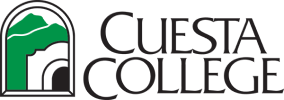
Program Summary
ACCOUNTING CLERK - Certificate of Achievement
2022 - 2023, 2023 - 2024, 2024 - 2025
The Accounting Clerk program provides students with entry-level competencies for employment in the accounting industry, government, financial institutions, small businesses, and medical offices. The program encompasses classroom instruction and hands-on applications with computerized account systems. Students who intend to pursue an accounting degree at a four-year institution will need to follow the courses required for the Business Administration transfer degree.
Career Opportunities
Becoming an accounting clerk can be a versatile career with widespread opportunities in many types of businesses, as well as government agencies and non-profit organizations. The Accounting Clerk supports accounting operations by maintaining accounting records; filing documents; reconciling bank accounts; maintaining accounting information systems; processing backups; and verifying financial reports.
Required Courses (22 units)
Units: 22.0
ACCT 201A
FINANCIAL ACCOUNTING
4.0
ACCT 201B
MANAGERIAL ACCOUNTING
4.0
ACCT 252A
COMPUTERIZED ACCOUNTING - QUICKBOOKS I
2.0
ACCT 252B
COMPUTERIZED ACCOUNTING - QUICKBOOKS II
2.0
BUS 253
WORK EXPERIENCE IN BUSINESS
3.0
BUS 228
OFFICE TECHNOLOGY AND TELECOMMUNICATIONS
3.0
CIS 210
INTRODUCTION TO COMPUTER APPLICATIONS
4.0
Total: 22.0
Program Outcomes
Demonstrate interpersonal skills appropriate to a business environment.
Direct Assessment: written/typed homework, class performance(s), quizzes/exams, performance exams, create business letters and individual and/or group project.
Create a filing system, identify and record financial transactions for a business using manual journals, ledgers, spreadsheets and computerized accounting software.
Direct Assessment: written/typed homework, class performance(s), quizzes/exams, performance exams, create business letters and individual and/or group project.
Prepare, interpret and communicate both cash and accrual financial statements using various word processing, spreadsheet, and computerized accounting software.
Direct Assessment: written/typed homework, class performance(s), quizzes/exams, performance exams, and create business letters.